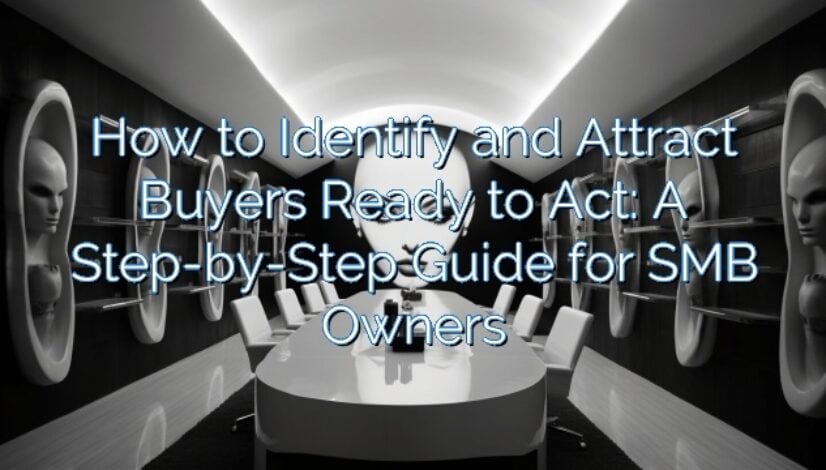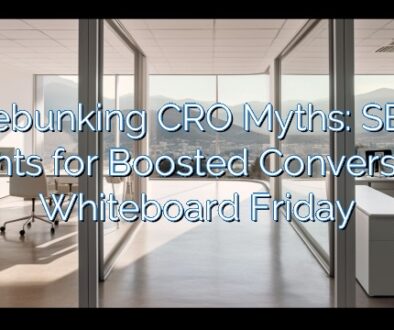How to Identify and Attract Buyers Ready to Act: A Step-by-Step Guide for SMB Owners
In the fast-paced world of small and medium-sized businesses (SMBs), identifying and attracting buyers ready to act immediately is crucial for sustainable growth. This guide will walk you through a step-by-step process to achieve this, leveraging strategic and focused approaches. Follow these steps to streamline your client acquisition process and boost your business success.
Step 1: Understand the Characteristics of Ready Buyers
1.1 Problem Awareness
Buyers who are ready to act are already aware of their problem. They don’t need to be educated about their pain points; they need solutions.
1.2 Failed Attempts
These buyers have tried to solve their problem but haven’t succeeded. They are actively seeking effective solutions.
1.3 Commitment to Change
Ready buyers are committed to changing their behavior to achieve different outcomes. They are motivated and willing to invest in a solution that works.
Step 2: Develop a Focused Strategy
2.1 Define Your Business Path
Choose a clear path for your business growth that aligns with your strengths and preferences. Avoid distractions and focus on key actions directly contributing to client acquisition and revenue.
2.2 Implement the 80/20 Principle
Focus on the 20% of actions that generate 80% of the results. Prioritize client acquisition and direct offers over other less impactful activities.
Step 3: Track Potential Buyers and Offers
3.1 Monitor Engagement
Track the number of potential buyers you meet and the number of offers you make daily. Use a simple yes/no system to determine whether each interaction has the potential to lead to a sale.
3.2 Continuous Engagement
Ensure continuous engagement and follow-ups with potential buyers until a sale is achieved. Consistent interaction keeps your business top-of-mind and moves buyers along the sales funnel.
Step 4: Create Effective Offers
4.1 Define Real Offers
A real offer addresses a known problem with a direct proposition. It’s not just content; it’s a dialogue that invites the buyer to take action.
4.2 Value-Based Pricing
Ensure that your offer’s value is clear and compelling. Buyers will pay for results, so focus on your services’ outcomes.
Step 5: Optimize Your Marketing Strategy
5.1 Lead Generation
Effective marketing should lead to qualified leads. Your content must drive the right people towards engagement and eventual conversion.
5.2 Adjust the Sales Funnel
Adjust your sales funnel to cater to buyers at different stages:
- Slow Lane: Nurture these buyers with informative content until they are ready to act.
- Middle Lane: Engage actively with these buyers to move them towards a decision.
- Fast Lane: Make immediate offers to these ready-to-buy clients.
Step 6: Build Human Connections
6.1 Human-Centric Approaches
In the age of AI, maintaining authentic engagement is key. Build human connections that foster trust and loyalty.
6.2 Success Stories
Use client success stories to build credibility. Demonstrating past successes with clients showcases your ability to deliver results.
Step 7: Immediate Actions to Take
7.1 Reevaluate Your Strategy
Reevaluate your business strategy to clarify who you serve and why they should hire you.
7.2 Conduct a Marketing Audit
Audit your marketing and engagement efforts to ensure they focus on attracting ready buyers.
7.3 Prioritize Sales
Remember that sales are your number one priority. Everything else is a distraction. Focus on identifying buyers and making offers to generate consistent revenue and business growth.
Conclusion
By understanding the characteristics of ready buyers, developing a focused strategy, tracking potential buyers, creating effective offers, optimizing your marketing strategy, building human connections, and taking immediate action, you can significantly improve your ability to attract and convert buyers who are ready to act. Implement these steps to achieve consistent client growth and drive your business success.
FAQs: How to Identify and Attract Buyers Ready to Act
1. What are the key signs a buyer is ready to act?
Buyers ready to act often show specific behaviors, such as frequent website visits, downloading resources, engaging with emails, and requesting quotes or demos. These actions indicate a high level of interest and readiness to make a purchase decision.
2. How can SMB owners identify potential buyers?
SMB owners can identify potential buyers by leveraging data analytics tools, monitoring engagement metrics, and utilizing lead scoring systems. These methods help track user behavior, identify patterns, and prioritize leads that show strong buying signals.
3. What strategies can attract buyers ready to act?
To attract buyers ready to act, SMB owners should focus on targeted marketing campaigns, personalized communication, offering value-driven content, and utilizing social proof such as testimonials and case studies. Optimizing the sales funnel and providing a seamless user experience are crucial.
4. Why is lead scoring important for identifying ready-to-act buyers?
Lead scoring helps in ranking leads based on their engagement and behavior. This process enables SMB owners to prioritize high-potential buyers, ensuring that marketing and sales efforts focus on leads most likely to convert.
5. How does content marketing help in attracting ready-to-act buyers?
Content marketing attracts ready-to-act buyers by providing valuable and relevant information that addresses their needs and challenges. Creating content such as blog posts, whitepapers, and videos helps build trust, demonstrate expertise, and guide potential buyers through decision-making.
6. What role does customer segmentation play in identifying buyers ready to act?
Customer segmentation involves dividing the target audience into distinct groups based on specific criteria such as demographics, behavior, and interests. This approach allows SMB owners to tailor their marketing efforts and create more personalized and effective campaigns that resonate with each segment.
7. How can SMBs use social media to attract ready-to-act buyers?
SMBs can use social media to attract ready-to-act buyers by engaging with their audience through relevant content, responding to queries, and participating in industry conversations. Social media platforms also provide valuable insights into buyer behavior and preferences, which can inform targeted marketing strategies.
8. What tools can help SMB owners identify and attract ready-to-act buyers?
Several tools, including CRM systems, marketing automation platforms, analytics tools, and social listening software, can assist SMB owners in identifying and attracting ready-to-act buyers. These tools provide valuable data and insights to optimize marketing efforts and enhance lead nurturing processes.
9. How important is aligning sales and marketing efforts in attracting ready-to-act buyers?
Aligning sales and marketing efforts is crucial for attracting ready-to-act buyers. A cohesive strategy ensures that both teams work towards common goals, share valuable insights, and provide a consistent experience for potential buyers throughout their journey.
10. How can SMB owners measure the effectiveness of their strategies in attracting ready-to-act buyers?
SMB owners can measure the effectiveness of their strategies by tracking key performance indicators (KPIs) such as conversion rates, lead quality, customer acquisition costs, and return on investment (ROI). Regularly analyzing these metrics helps refine strategies and ensure continuous improvement.




